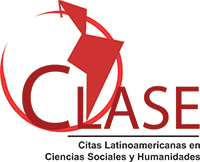UNA REFORMULACIÓN DEL MODELO NEOCLÁSICO DE CRECIMIENTO ECONÓMICO
Abstract
The fundamental purpose of the present research article is to offer a new presentation, complete and understandable, of the Neoclassical model of economic growth. In the first place, the minimum theoretical frame is presented for the construction and justification of the model. Afterwards, the model is posed and solved as a problem of dynamic optimization by means of the Euler-Lagrange equations, only to then proceed with the stability analysis of the model’s equilibrium points. Lastly, the phase space of the model is constructed, using specific parameters.
Downloads
References
Acemoglu, D., Introduction to Modern Economic Growth, Princeton University Press, New York, 2009, p. 990.
Alvarez Texocotitla, Miguel, y M. David Alvarez-Hernández, “Una Revisión Crítica a los Modelos Básicos de Crecimiento Económico”, Denarius, 29, 2015, pp. 191-252.
Barro, R. J. & X. Sala-i-Martin, Crecimiento Económico, Editorial Reverte, México, 2009, p. 654.
Cass, D., “Optimum Growth in an Aggregative Model of Capital Accumulation”, The Review of Economic Studies, 32, 3, 1965, pp. 233-240.
Cass, D. & K. Shell, “Introduction to Hamiltonian Dynamics in Economics”, Journal of Economic Theory, 12, 1, 1976, pp. 1-10
Lomelí, Héctor E. e Irma B. Rumbros, Métodos dinámicos en economía, Thomson Editores, México, 2005, p. 554
Pedregal, P., Introduction to Optimization, Springer-Verlag, New York, 2004, p. 245.
Pindyck, R. S. y D. L. Rubinfeld, Microeconomía, 7ª ed., Pearson Prentice Hall, Madrid, 2009, p. 845.
Ramsey, F. P., “A Mathematical Theory of Saving”, The Economic Journal, vol. 38, no. 152, 1928, pp. 543-559.
Romer, D., Advanced Macroeconomics, McGraw-Hill, New York, 1996, p. 540.
Shone, Ronald, Economic Dynamics, Cambridge University Press, USA, 2002, p. 708.
Copyright (c) 2017 Denarius

This work is licensed under a Creative Commons Attribution-NonCommercial-ShareAlike 4.0 International License.














